Cake Mascara or Cream Mascara: Which One Should You Choose
You don’t need to be a makeup artist to know that mascara has had a huge impact on fashion for centuries. People were lining their eyes and plumping their lashes back when the pyramids were being built, and we’re still doing it now. Of course, our methods have changed a bit since then. Now, you can find mascara that comes in a whole variety of colors and styles, but the basic concept remains the same.
There are two basic types of mascara: cream and cake. Each comes with a variety of perks and individual qualities. Which you choose is dependent upon your personal preferences, goals, and style.
A Brief History of Mascara
The grandmother of mascara can be traced back to ancient Egypt, where dried pigment was often rubbed around the eyes and onto the eyelashes of important individuals. Then, it was a symbol of religious faith and cultural prestige. Since then, it’s morphed into a beauty product utilized by people of every class for any occasion.
In ancient times, people often made their own lash-plumping substances. In Victorian England, women would mix ash with pigments derived from plants. This was a long and often risky process. Fortunately, by the 1920s, cakes of pigment were hitting store shelves. Much like watercolor paints, these compact patties only needed a small amount of water to turn into a workable makeup. With the help of a washable applicator brush, this pigment could then be applied to lashes, brows, and even used as an eyeliner!
Aside from the obvious benefit of no longer having to smush up your own messy ash-and-blueberry-gunk mixture, these cakes came with the added benefit of being surprisingly sterile. The dried patties had few places for bacteria to hide, and well-cleaned brushes denied germs a spot to get cozy, which helped increase their appeal after their invention in 1915.
In the 1950s, mascara took another huge leap. Cakes were reformulated into creams. At first, these mixtures were packaged in individual, squeezable tubes with a separate brush included. After some time, another innovator decided to put the applicator into the tube; thus, the ubiquitous and highly portable version of mascara that we know today was born.
What’s the Difference?
Okay, knowing where mascara comes from is fun trivia, but what’s the difference between liquid mascara and cake mascara? Which is better to use?
Cake Mascara
Let’s jump right in with the classic form: cake mascara. This is your grandma’s mascara, but that’s not a bad thing! Cake mascara was once the only option, and it remains a good choice for hygiene- and eco-conscious shoppers. This unique, vintage type of mascara can be hard to find, but we happen to carry some!
We’ve already mentioned that this form of mascara is less germy than most modern tube mascaras. However, there are other benefits. To start with, it’s a light and portable choice. In addition to their general grossness, the clumpy and gunky nature of modern liquid mascara often sticks hairs together and ruins expensive lash extensions. Cake mascara is easy to use, control, and a little product goes a long way.
The small amount required for noticeable results also makes cake mascara an eco-friendly option. Frequent users of mascara can use a single cake of mascara for much longer than they would a tube. Since the mascara is dry, it also has a much longer shelf life. This means that occasional users can keep a handy mascara cake for years versus the few months of shelf life for modern liquid mascaras.
Cream Mascara
The alternate form of mascara is, of course, cream mascara. In this form, you achieve long lashes with a thick, liquid substance. This is not to be confused with messy, runny liquid mascara, though! Cream mascara comes in individual tubes, like toothpaste, and the brush applicators are kept separately. So, for starters, you’re already getting the same hygiene benefits of a cake!
A good cream mascara, like our 1940’s vintage-inspired cream mascara, also boasts the same portability as tubes of liquid lengthening mascara or pricey volumizing mascara.
Bésame's Cream mascara avoids waste and contamination, as the applicator never enters the container. You control how much product is on the applicator by squeezing the desired amount onto the brush. More importantly, cream mascara is much easier to control and apply than liquid options, which tend to clump your lovely lashes into spider-leg-like chunks.
Cream mascara is also eco-friendly. As long as the package is tightly sealed after each use, the contents resist drying and caking for up to a year and a half.
Ultimately, your favorite mascara will be a matter of personal preference. Both forms come with benefits and drawbacks. It’s a matter of knowing how you prepare for your day and understanding what your individual needs are. We can’t pick a mascara for you, but we can help you weigh your options.
Looking for more information on makeup history? Want to test out vintage-inspired makeup yourself? Visit Bésame online for lots more like this!









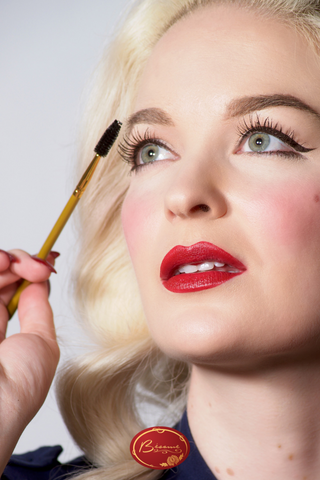
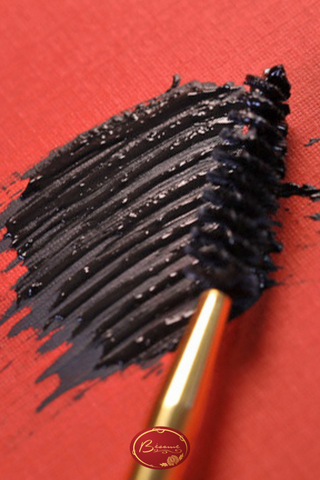
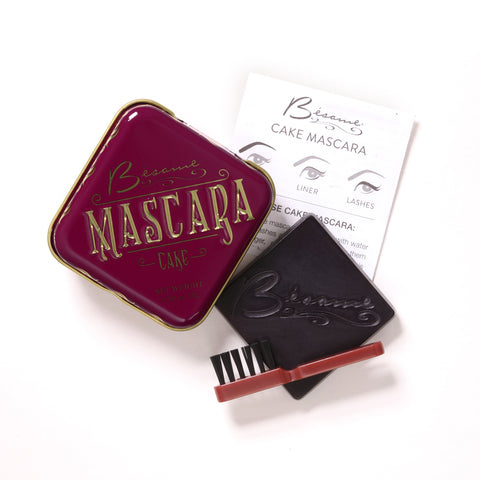
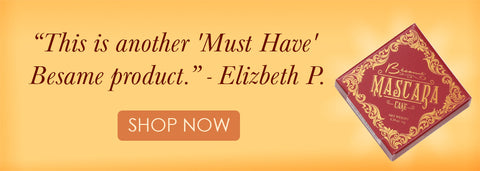
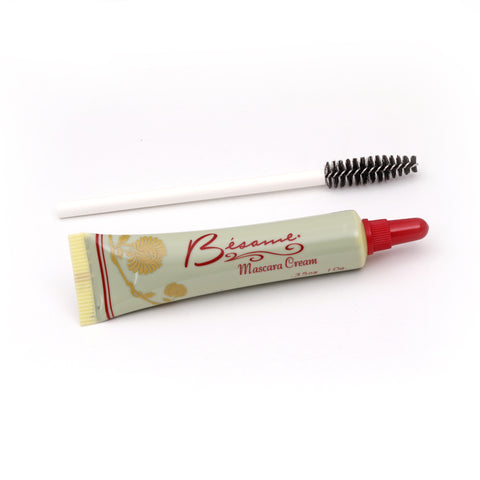
Leave a comment